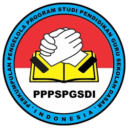The Role of The Principal in Improving the Quality of Education Through School-Community Relations Management at MI Persis Gandok Tasikmalaya City
DOI:
https://doi.org/10.35568/naturalistic.v9i1.4444Keywords:
principal, management, public relationsAbstract
The aim of this research is to determine Public Relations management at MI Persis Gandok City. Tasikmalaya. Meanwhile, the specific aim is to describe the planning of school and community relations, the implementation of school and community relations and how the principal evaluates the implementation of school and community relations. The research method used in this research is qualitative descriptive research. MI Persis Gandok is planning several public relations work programs, among which the Public Relations Program is to form cooperation in the field of strengthening educational institutions through the formation of Madrasah Councils and Congregational Leadership. Through the formation of madrasah councils and congregational leaders, they can provide a bridge in the form of communication between the school and the community. To make the MI Persis Gandok school public relations program a success, there are several techniques that can be used. The technique chosen is a technique that is considered effective and efficient according to school conditions, the condition of the students' parents, the condition of the surrounding community, and the school's finances. Among these techniques are: group face-to-face meeting techniques, individual face-to-face meeting techniques and school publication techniques. One form of evaluation by the Principal of MI Persis Gandok towards Madrasah Public Relations is through observation, checklists, questionnaires and/or through meetings/briefings. The objectives of this evaluation are: 1) To ensure that the entire program is known; 2) Ensure that the Madrasah's image in society has good values; 3) make a follow-up to the evaluation results.
Downloads
References
Coulsan, Colin dan Thomas. 2002. Public Relations Pedoman Praktis untuk PR. Jakarta: Sinar Grafika Offset
Daryonto, M. 2010. Administrasi Pendidikan. Jakarta: Rineka Cipta.
Djam’an Satori. 2013. Metodologi Penelitian Kualitatif. Bandung: Alpabeta
Effendi, Usman. 2014. Asas Manajemen. Jakarta: Rajawali Pers.
Hardinal. 2010. Kepemimpinan Kepala sekolah Dalam Meningkatkan Partisipasi Warga Sekolah. Tesis. Bengkulu: Unib
Indrafachrudi, Soekarno. 2006. Bagaimana Memimpin Sekolah yang Efektif. Bogor: Chalia Indonesia
Moleong, Lexy.J. 2000. Metodologi Penelitian Kualitatif. Bandung: PT Remaja Rosdakarya.
Morisaan. 2008. Manajemen Public Relations: Strategi Menjadi Humas Profesional. Jakarta: Kencana.
Morissan. 2014. Manajemen Public Relations. Jakarta: Prenada Media Group.
Ruslan, Rosady. 2008. Public Relation dan komunikasi. Jakarta: PT Raja Grafindo Persada.
Rusmaini. 2014. Ilmu Pendidikan. Palembang: Grafika Telindo Press.
Soemirat, Soled dan Elvinaro Ardianto. 2004. Dasar-dasar Public Relations. Bandung: Remaja Rosdakarya
Sulaiman. 2008. Hubungan Persepsi Guru Tentang Kepemimpinan Kepala sekolah dan Iklim Kerjasama dengan Kinerja Guru MTsN Ipuh Muko-Muko Selatan. Tesis. Bengkulu: Unib
Suktino, Sobri. 2012. Manajemen Pendidikan Langkah Praktis Mewujudkan Lembaga Pendidikan Yang Unggul (Tinauan umum dan Islami). Lombok: Holistica.
Wahjosumidjo. 1999. Kepemimpinan Kepala sekolah. Jakarta: Raja Grafindo Persada
Downloads
Published
How to Cite
Issue
Section
License
Copyright (c) 2024 Naturalistic: Jurnal Kajian dan Penelitian Pendidikan dan Pembelajaran

This work is licensed under a Creative Commons Attribution-NonCommercial-NoDerivatives 4.0 International License.
Copyright of Journal Naturalistic : Jurnal Kajian Penelitian Pendidikan dan Pembelajaran (e-ISSN:2548-8589, p-ISSN:2528-2921).
Open Access Policy
This journal provides immediate open access to its content on the principle that making research freely available to the public supports a greater global exchange of knowledge.
This journal is open access journal which means that all content is freely available without charge to users or / institution. Users are allowed to read, download, copy, distribute, print, search, or link to full text articles in this journal without asking prior permission from the publisher or author. This is in accordance with Budapest Open Access Initiative.






